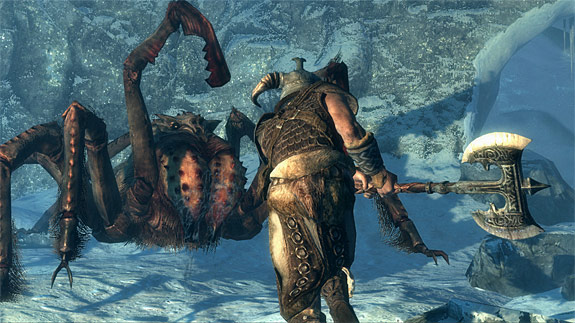Tilled soil is created by right-clicking the top of a dirt block while you’re wielding a hoe- and tilled soil is a little fragile. If a player- including yourself- walks across tilled soil normally, it will have a good chance of turning back to regular dirt, destroying whatever is growing there in the process. Fortunately, using the Shift button to crouch/tiptoe will let you avoid.
Additionally, if you’re playing a version of Minecraft before public 1.1, then this is also true of any animals and monsters wandering across tilled soil. This means setting up fencing and torches around your crops to keep monsters from spawning in and wandering through, lest they destroy all your hard work.
Mind, that isn’t to say you don’t want to keep mobs out of your fields anyway. Trying to fight in the middle of your wheat without destroying it is a very frustrating prospect, just as an example. On the other hand, this does mean that you can pen your animals into areas where you are growing crops without worrying about them damaging your harvest.
Tilled soil also comes in two states- dry and damp. Tilled soil will be or become damp if it’s within roughly five to six squares of a water source or mostly-full block of flowing water. This causes the soil to become darker- and also protects it against despawning. Crops planted in tilled soil generally don’t grow if the soil doesn’t have this access to water, making either buckets or creative digging very important to farming.
Wheat is the most basic crop you can grow in tilled earth, and also the one you are likely to grow the most of. Harvested wheat can be used not only to make bread, but is also important in journeyman-level farming when you are raising animals. Additionally, you need wheat to make cake, and who doesn’t like cake? I thought not.
Wheat requires damp tilled soil, and grows straight up into the block-space overhead. Starting out as a mass of green seeds on the top of the dirt block, wheat remains green or green-yellow as it grows through four stages. Cutting the wheat down during this time will, at best, yield only your seeds back- and often will result in nothing at all instead. Wheat harvested when it is golden-brown, though, will produce not only a bundle of wheat, but one or two batches of seeds as well. Because harvesting from tilled soil does not alter the soil itself, you can replant more wheat immediately, and because of wheat’s low requirements for growth, it is very easy to constantly and quickly gather large amounts of wheat.
Watermelon and pumpkins grow the same as one another, which makes them conveniently easy to explain. Watermelon and pumpkin vines will grow in damp tilled soil, and go through three stages- but you never have to pick the vine after that. When a watermelon or pumpkin vine is mature, every so often it will check if it is attached to a melon or pumpkin. If it is not, it will spawn one in one of the four spaces that share a side with it, and bend towards that space.
When a melon or pumpkin grows, the ‘fruit’ itself doesn’t need a tilled soil space- as long as the block is dirt, the melon or pumpkin will grow there. Because of this, while the actual patterns for growing melons or pumpkin efficiently are a bit complex, it is far easier to avoid stepping on tilled blocks and ruining your planting soil.
Still, for wheat, melon, and pumpkins, you want to make absolutely sure you have a way of getting around and to all of your field without stepping into your planting beds. You never know when you’ll need to evade a monster, and it’s better to do so without damaging your own farm in the process.





